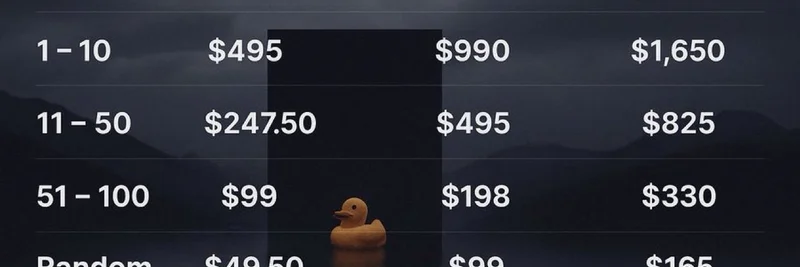In the fast-paced world of cryptocurrency, staying ahead means understanding projects that bridge gaps between technologies. Recently, BSC News shared an insightful analysis on Quant Network via this tweet, highlighting it as one of the most unique platforms in the industry. If you're into blockchain, you've probably heard about the challenges of interoperability—basically, how different blockchains talk to each other. Quant Network tackles this head-on with its Overledger system, and its native token, $QNT, plays a key role. Let's break it down in simple terms, drawing from that detailed BSC News piece.
What is Quant Network?
Imagine blockchains as separate islands, each with their own rules and no easy way to send messages or goods between them. That's the fragmentation problem in crypto today. Quant Network steps in as a bridge-builder, creating a universal protocol that lets these islands communicate seamlessly. At its core is Overledger, which acts like an operating system sitting on top of various blockchains—think of it as the Windows for your crypto world, but without being a blockchain itself.
Overledger is blockchain-agnostic, meaning it doesn't favor one network over another. It connects major ones like Bitcoin, Ethereum, and XRP Ledger, allowing data and assets to flow freely. There's also the Overledger Network Marketplace, where you can buy and sell multi-chain apps (called mDApps) using smart contracts. Fees go through the Quant Treasury, which keeps things running smoothly.
One cool feature is tokenization. Using APIs like Overledger Tokenise, you can create digital versions of real-world assets—QRC-20 for fungible tokens (like money) and QRC-721 for NFTs (unique items like art). This opens doors for everything from digital collectibles to securities.
Then there's Quant Flow, a "money engine" for automating financial stuff. It handles issuing, settling, and managing assets in capital markets, including payments and compliance. It even links to traditional bank accounts and stablecoins, making things faster and more efficient without ditching old systems.
How Does Quant Network Work?
Overledger works by overlaying different blockchains, using APIs to let developers build apps that span multiple networks. You can write smart contracts—those self-executing codes—in any programming language, which lowers the barrier for coders who aren't crypto experts.
Security is a big deal here. Overledger ensures interactions between ledgers are secure and prevents forking, which is when a blockchain splits into versions. For payments, $QNT is used for operations like reading/writing data, swapping assets across chains, and running contracts.
The Quant Treasury converts fiat money (like dollars) to $QNT through over-the-counter trades to avoid messing with market prices. Tokens get locked for licenses, and staking $QNT gives you voting rights on network decisions—kind of like being a shareholder.
In finance, Quant Flow bridges networks like Ethereum and enterprise ones like R3 Corda, slashing settlement times from days to seconds. It's all about making money move smarter.
Key Features of Quant Network
What sets Quant apart? First, it integrates with existing systems without forcing a total overhaul, saving businesses time and money. Tokenization covers assets, securities, and even supply chain tracking for better traceability.
Privacy is handled through features like Privacy Pools, inspired by Ethereum's Vitalik Buterin, balancing transparency with user privacy. Developers get an SDK and docs to build multi-chain apps easily.
The token supply is fixed at about 14.6 million, with deflationary tricks like locking tokens for 12 months during licensing. This could reduce circulating supply by 5-10% a year as adoption grows, potentially boosting value.
The QNT Token Explained
$QNT is an ERC-20 token on Ethereum, but it's all about utility in the Quant ecosystem. It's not just for holding value—it's the fuel for Overledger.
You need $QNT for licenses to access APIs, where fiat fees convert to tokens and lock up for a year. It's also used for payments in operations and staking for governance.
With a fixed supply (no new tokens minted), and mechanics that lock away tokens, $QNT's demand ties directly to how popular Overledger becomes. The Treasury keeps things stable by managing conversions.
A Bit of History and Future Outlook
Quant was founded in 2015 by Gilbert Verdian, a cybersecurity pro with experience at big names like Mastercard. The idea for Overledger started in 2013, leading to standards like ISO TC307 for blockchain.
They raised $26 million in their 2018 ICO, burned some tokens to cap the supply, and hit milestones like fintech services in 2019 and government partnerships in 2020-2021.
Looking ahead, Quant is eyeing big things like the ECB's Digital Euro and expanding Quant Flow for more financial automation. Their vision? An "Internet of Trust" where value and data zip around globally without barriers.
While not explicitly a meme token, Quant's innovative approach has sparked buzz in crypto communities, positioning it as a serious player in interoperability. As blockchain adoption ramps up, especially in finance and CBDCs (central bank digital currencies), $QNT could see more action.
If you're curious, check out the full analysis on BSC News or follow Quant on X. In the meme world, we love hype, but projects like this remind us of the tech foundations that could fuel the next big wave. Stay tuned for more insights on how these intersect with meme tokens at Meme Insider!

